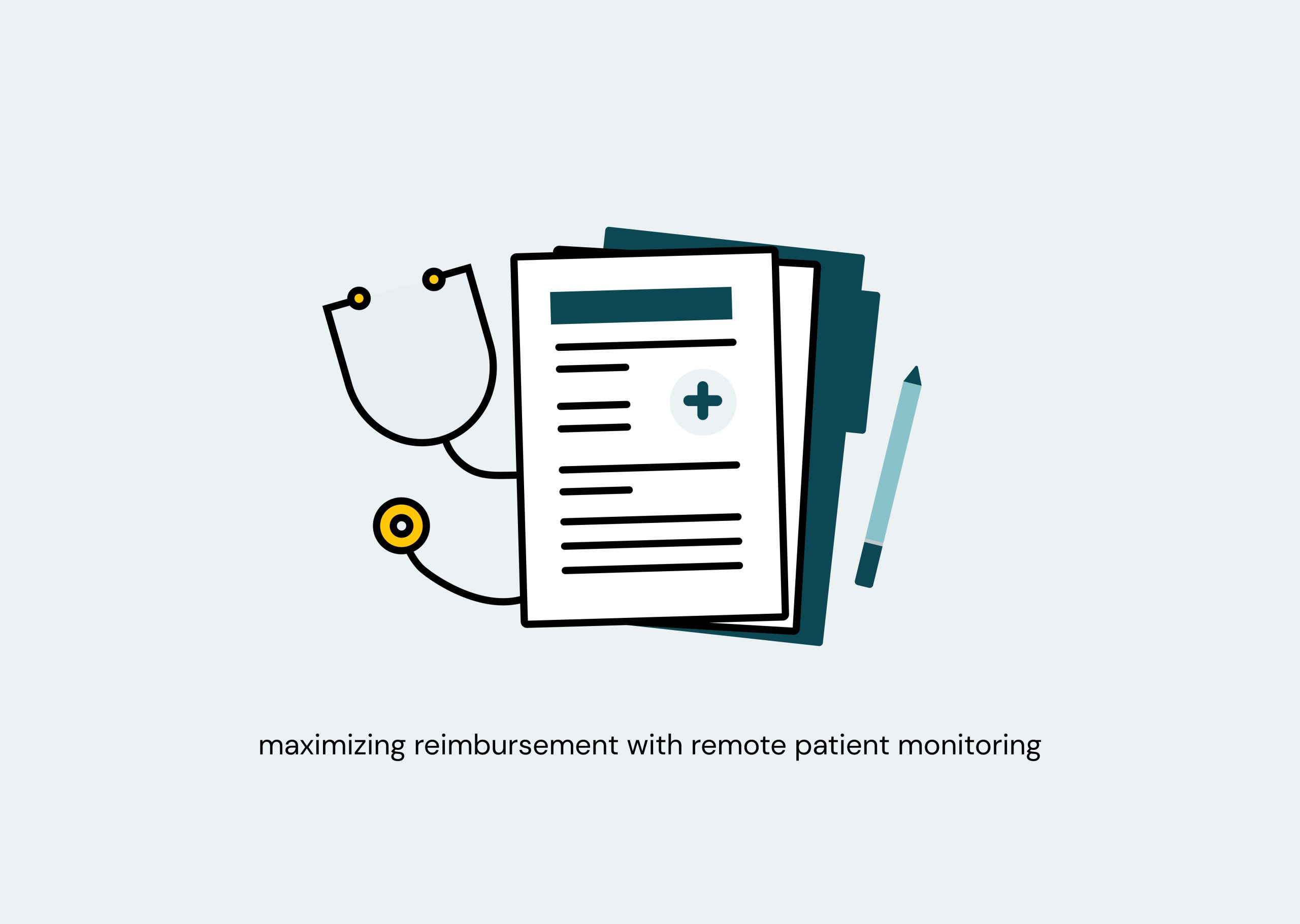
Billing CPT Code 99454 for Remote Patient Monitoring
Remote patient monitoring (RPM) has become an increasingly popular method of providing healthcare services to patients in the comfort of their own homes. With RPM, providers can remotely monitor patients’ physiological data and provide timely interventions, leading to improved patient outcomes and reduced healthcare costs. To reimburse providers for RPM services, there are specific Current Procedural Terminology (CPT) codes, with CPT code 99454 being one of the primary codes used for automated data transmission from the patient’s device to the practice’s RPM platform. Here are the top things you need to know about billing CPT code 99454.
Who can order CPT code 99454?
An ordering provider, such as a physician or other qualified healthcare provider, can order RPM for the patient. It’s important to note that while the patient does not need to have an official diagnosis, the ordering provider should only prescribe an RPM program to a patient if they believe the prescription is medically necessary. Common conditions that are monitored via RPM include hypertension, diabetes, chronic kidney disease, and chronic/congestive heart failure.
The 16-day requirement
To bill CPT code 99454, the patient must submit at least 16 days of readings within a 30-day period. These readings must be taken on separate days, and if a patient takes readings twice a day for 10 days, that would only count as 10 days of readings. The reading days do not need to be consecutive, but patients are more likely to be successful if they take their readings each day.
Billable every 30 days
CPT code 99454 can be billed once every 30 days. It’s not tied to the calendar month, although many practices choose to bill on a calendar basis for simplicity in billing.
Patients with multiple devices
If a patient has multiple devices, the total days of readings must still be 16. However, readings from both devices will count toward the 16-day requirement. For example, if a patient takes a blood pressure and weight reading on the same day, that would count as one day of readings. All devices must meet the FDA definition of a medical device, and it’s recommended to choose an RPM partner that provides FDA-regulated devices for at-home use.
Reimbursement rates
According to the CMS CPT Guidebook, Professional Edition 2023, the national average reimbursement rate for CPT code 99454 is $48.93, although rates may vary by geography and location. It’s important to consult with your billing specialist or MAC office for guidance on interpreting or defining CMS RPM codes, and local reimbursement rates can be found on CMS.gov physician fee schedule.
Best practices for meeting CPT code 99454 requirements with Vianova
Vianova, a leading RPM platform, provides the following best practices for maximizing patient engagement and meeting the requirements for billing CPT code 99454:
Build trusted relationships: Patients are more likely to take regular readings when they have strong relationships with their monitoring team. Vianova recommends calling patients at least once a week to foster a sense of connection and investment in their own health.
Allocate sufficient monitoring staff: Building trusted relationships with patients requires time, so Vianova strongly recommends dedicating clinical staff time to the RPM program to provide the best remote care experience for patients. One full-time clinician who is dedicated solely to RPM can effectively monitor 150-200 patients. If your practice lacks sufficient clinical resources, considering an RPM partner that provides clinical monitoring can expand your capacity without adding overhead costs. The more patients interact with their monitoring team, the more likely they are to take more readings.
Continually track patient adherence:
A good RPM platform should have the capability to continually track patient adherence to the prescribed RPM program. This includes monitoring and recording the number of readings taken by each patient, as well as identifying patients who may not be on track with the prescribed number of readings. This information can be used by the monitoring team to prioritize outreach and engagement efforts for patients who may need additional support.
Ask questions to understand non-adherence: If a patient is not taking regular readings, it’s important for the monitoring team to try to understand why. Asking patients questions to uncover any barriers or challenges they may be facing can provide valuable insights. For example, the monitoring team can inquire about the functionality of the patient’s device, their understanding of how to use it, whether they need new batteries, or if they have experienced any personal or travel-related difficulties that may be affecting their ability to take readings regularly.
Maximize patient engagement: To optimize patient engagement, many of the best practices covered in the Definitive Guide to CPT code 99453 can be applied. Building trusted relationships with patients, allocating sufficient monitoring staff, and regularly communicating with patients to keep them connected to their providers can all contribute to increased patient engagement and adherence to the RPM program.
Want to Learn More about How to Bill for RPM?
In conclusion, Remote patient monitoring (RPM) has become an increasingly important tool in healthcare, allowing providers to monitor patients’ health remotely and provide timely interventions when needed. Understanding the specific CPT codes for RPM reimbursement is crucial for providers to effectively bill for these services. CPT code 99454, which covers automated data transmission from the patient’s device to the practice’s RPM platform, has specific requirements that must be met for reimbursement. By familiarizing themselves with the key aspects of CPT code 99454, such as patient eligibility, the 16-day requirement, billing frequency, and reimbursement rates, providers can ensure proper billing and maximize reimbursement for RPM services. Additionally, implementing best practices for meeting CPT code 99454 requirements, such as building trusted relationships with patients, allocating sufficient monitoring staff, and continually tracking patient adherence, can contribute to successful RPM programs and improved patient outcomes.



FEEL FREE TO DROP US A LINE.